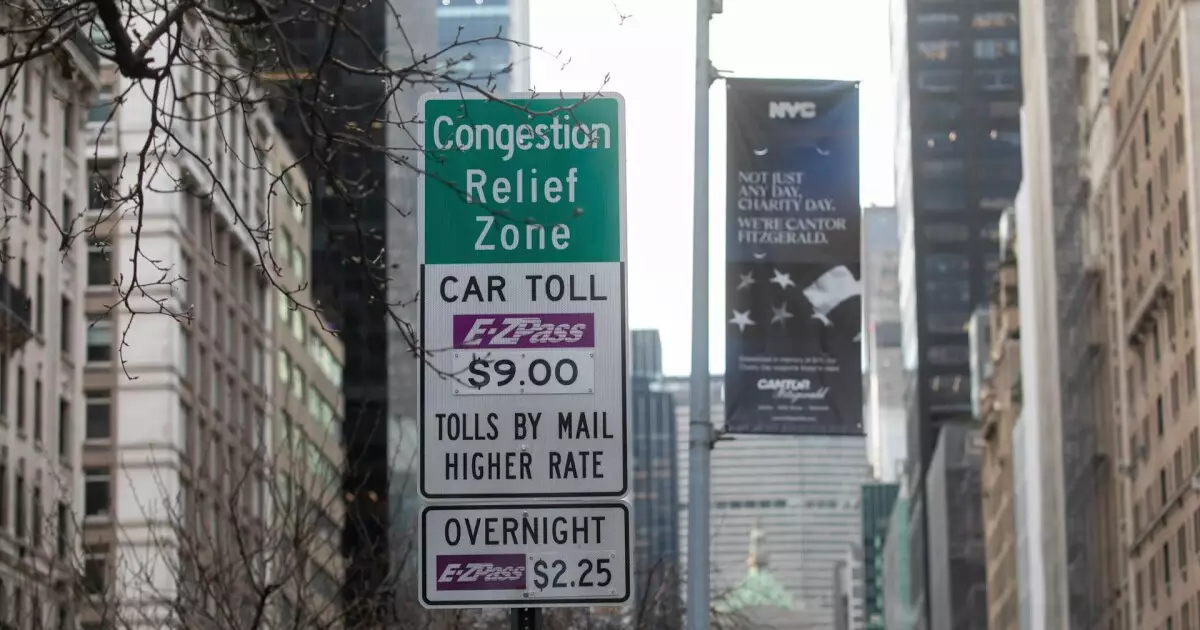The recent decision by the Trump administration to revoke federal approval for New York City’s congestion pricing initiative has stirred considerable controversy. What began as a promising effort to curb vehicular congestion in one of the busiest urban centers in the United States has come under threat due to political maneuvering. The initiative, originally proposed by former Mayor Michael Bloomberg in 2007, aims to charge drivers a fee for entering certain parts of Manhattan during peak hours, thus intending to both reduce congestion and generate revenue for public transit projects. This sudden termination, just weeks after its launch, forces us to examine the implications of this decision on New York’s transportation landscape and the broader dialogue around urban congestion management.
Transportation Secretary Sean Duffy framed the administration’s actions as necessary to protect the interests of working-class Americans. According to Duffy, the tolls imposed on drivers unfairly burden those who have already contributed to the infrastructure through taxes such as gas taxes. His stance mirrors a broader populist sentiment, suggesting that the program primarily serves to fund a public transit system while neglecting the need for adequate vehicle access. Critics of this position argue that the congestion pricing program was meticulously designed to alleviate traffic problems in New York, which often negatively impacts not only commuter efficiency but also air quality and urban livability.
Duffy’s assertion that the program runs counter to the original goals of the federal Value Pricing Pilot Program (VPPP)—which aimed to utilize tolling to reduce congestion—raises important questions about federal involvement in state-level transportation strategies. By prioritizing toll-free routes and focusing on revenue generation for transit rather than genuine congestion alleviation, the administration positioned itself against a burgeoning trend in urban management that seeks to redefine how cities address density and mobility.
In immediate reaction to the federal decision, the Metropolitan Transportation Authority (MTA) escalated its efforts by filing a lawsuit to maintain the program. MTA Chair and CEO Janno Lieber asserted that the congestion pricing initiative had proven effective in reducing traffic congestion and improving travel times, countering the federal narrative presented by Duffy. He emphasized the importance of the program not only to those who rely on mass transit but also to the drivers navigating through Manhattan.
The dichotomy between the federal government’s stance and local leadership underscores a deeper systemic conflict regarding urban planning priorities. Local officials argue that such congestion policies are essential for managing the realities of urban living, while the federal response indicates a sidelining of local governance and a misinterpretation of the needs of city residents.
The implications of this tumultuous decision transcend New York City and resonate deeply within the national conversation around urban planning and infrastructure funding. As cities grapple with rapid population growth and increased vehicle congestion, congestion pricing has emerged as a viable solution being adopted in urban areas around the world. Many experts advocate that the financial incentives generated from congestion pricing can be reinvested into public transit systems, enhancing their viability and sustainability.
However, the backlash stemming from the Trump administration’s cancellation of New York’s congestion pricing program signals potential hurdles for similar initiatives across the nation. Conflicting priorities between local governments and federal authorities can result in stalled progress on crucial urban initiatives and may inhibit a broader acceptance of congestion pricing as a tool for urban management.
As discussions regarding transportation policies evolve, it is imperative for all stakeholders—local governments, federal entities, and the public—to engage in meaningful dialogues about the future of urban mobility. The interruption of New York City’s congestion pricing program illustrates the friction that can occur when local strategies meet federal scrutiny. Moving forward, cities must advocate for their own needs while navigating the complexities of federal policy, all while keeping the ultimate goal—enhancing urban livability—at the forefront of their planning initiatives. The challenges ahead will require strategic collaboration and innovation as cities seek to create transportation systems that effectively cater to the demands of their growing populations.

